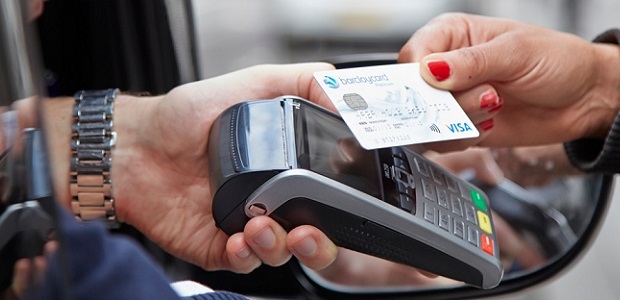
Barclaycard, the global payments company, marks the 10-year anniversary (on September first) of launching contactless payments to the UK.
„Over the past decade, more than £60 billion has been spent using contactless cards and devices and today more than half (51 per cent) of eligible transactions up to the £30 limit are made using the technology.”, according to the press release.
Such is the growth of ‘touch and go’ that Barclaycard research shows six in 10 Brits now choose to pay with their contactless cards and devices when the option is available and usage is projected to rise by a further 317 per cent by 2021.
New data from Barclaycard’s Contactless Spending Index also reveals that nine in 10 eligible transactions in fast food outlets (91 per cent) and pubs and bars (89 per cent) are now made using contactless when the option is available. While in supermarkets and convenience stores more than three quarters (76 per cent) of purchases up to £30 in value are made using ‘touch and go’.
In the past 12 months contactless spending has continued to grow across all sectors. Clothing stores have seen the biggest jump with a 321 per cent year on year rise, followed by Parking lots (137 per cent), department stores (126 per cent), supermarkets (124 per cent) and gift, card & novelty shops (105 per cent).
Short history
The very first UK contactless payments card, the ‘Barclaycard OnePulse’, was launched in September 2007. The innovative card combined Chip and PIN, contactless payment and Oyster functionality. It kicked off a payments’ revolution that has seen £60bn spent using contactless and six in ten Brits now choosing to pay with their contactless cards.
When the OnePulse card launched, contactless could be used to pay at 22,000 Oyster terminals at 6,000 retailers. Barclaycard worked with retailers to update their payment terminals so they could accept ‘touch and go’ technology. The first retailers to accept contactless were coffee shops and fast food outlets including EAT and Pret A Manger, allowing them to serve more customers in less time.
In 2011, Barclaycard joined forces with Orange to launch the first mobile device that allowed users to make contactless payments, and just a year later the PayBand was launches the first wearable payment device.
By 2013, annual contactless transactions reached £1bn for the first time and the following year saw a further expansion as TfL began accepting contactless cards at station barriers, allowing customers to skip queues at ticket machines.
Throughout the UK there are now more the 106 million contactless cards which can be used to pay at almost 500,000 payment terminals. What’s more, two in five retailers who accept contactless, plan to become completely cash-free in the next five years.
Banking 4.0 – „how was the experience for you”
„To be honest I think that Sinaia, your conference, is much better then Davos.”
Many more interesting quotes in the video below: